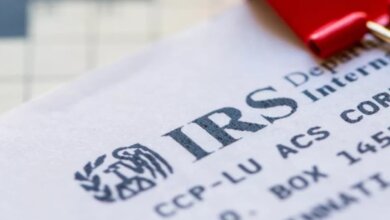Self-Employment Tax 2023 - 2024
Anyone who works for themselves must pay self-employment tax if their income from this work is more than $400. This article will cover must-knows about self-employment taxes.

Self-Employed people are those who run a business, such as a sole proprietorship or an independent contractor, and it also applies to freelancers and other types of contract workers. Self-Employment Tax rate is 15.3%, and it consists of Social Security and Medicare taxes. Most people who work full-time jobs have FICA and Medicare taxes withheld from their paychecks, but self-employed individuals must pay the tax on all of their income Working for yourself gives you great flexibility but also requires paying your income taxes. You must pay quarterly estimated taxes without the benefit of employer-withheld payroll tax.

How to Calculate Self-Employment Tax?
To figure out how much you owe in self-employment taxes, you must subtract your expenses from your business income. The result is your net profit or loss, which you must report on Schedule C or Form 1040, Self-Employment Tax. If you file a joint return with another self-employed person, both of you must calculate your net profit or loss and report it separately.
The good news is that you only pay self-employment tax on net earnings, not gross earnings. In addition, the Social Security portion of this tax is only on your first $147,000 in income for 2022. You’ll also likely have to pay a 0.9% Medicare tax on net earnings above $250,000 for the same period.
Some people can reduce their SE taxes by setting up their businesses as S corporations. However, this isn’t right for everyone. A tax professional can help you determine whether this is a good strategy for your situation. Additionally, people who rely on self-employment income must typically make estimated tax payments each quarter in an amount that is based on their best guess of their annual income. You’ll face state and federal penalties if you miss making your estimated tax payments.

Self-Employment Tax Deduction 2024
The good news is that there are several ways to reduce your self-employment tax liability. For example, you can save on health insurance costs by establishing your own health plan or transferring your existing coverage to your new business. You can also claim deductions for certain expenses, such as travel, equipment, and education. For example, if you are a freelance writer, you can deduct the cost of attending a writing workshop to learn more about your craft. However, you can’t claim a tax deduction for taking college classes to change your career.
While the 15.3% self-employment tax may seem like a lot, you can often get a big chunk of it back at tax time. In fact, half of the self-employment tax you pay is a tax write-off that can be applied to your income taxes.
You can also use your business expenses to reduce your self-employment tax bill, such as office supplies and software costs. However, the IRS has rules about what you can deduct and cannot. So, be sure to follow the rules and only deduct qualified expenses.





